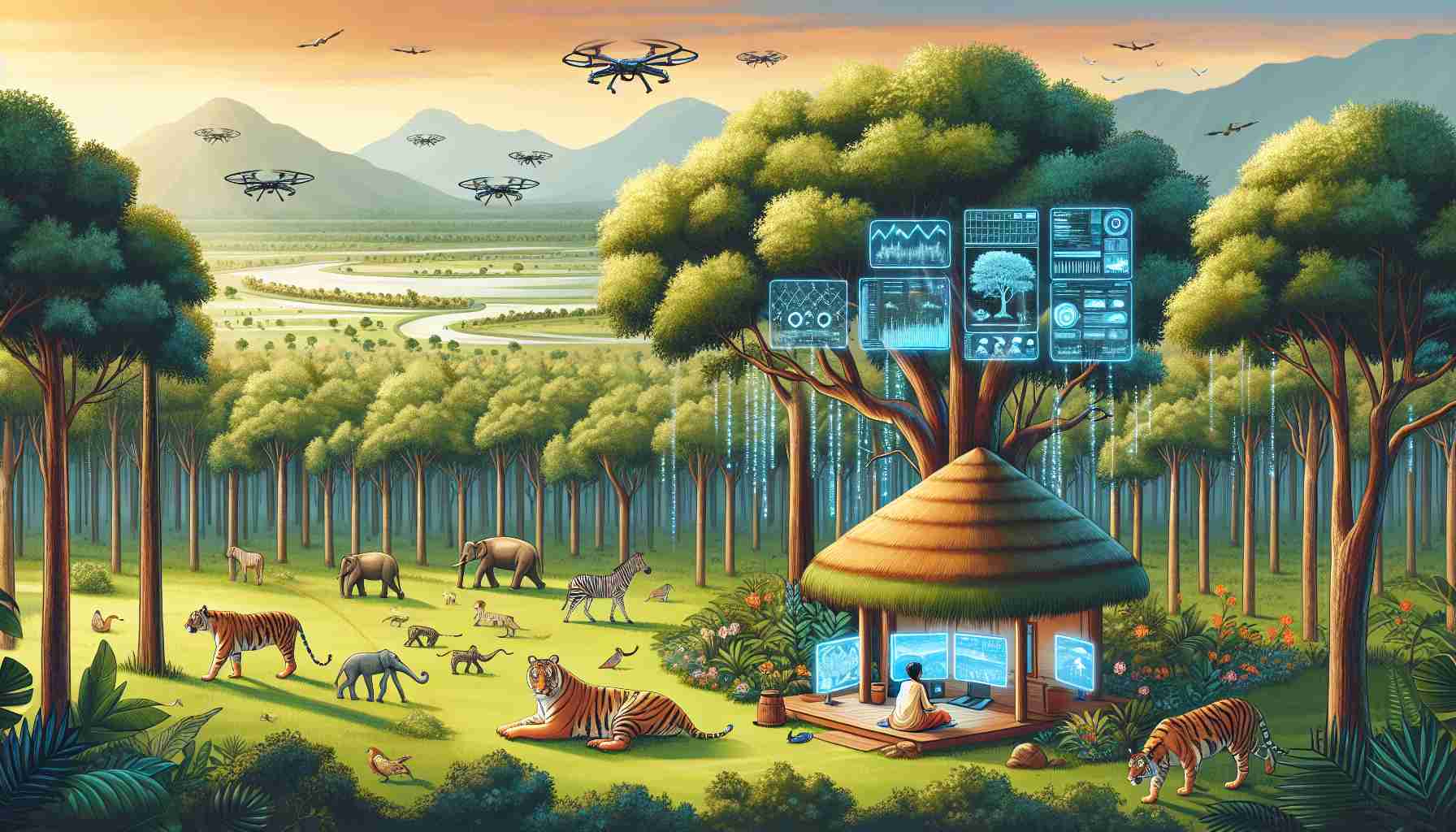Wild elephants in India face numerous dangers, particularly from train collisions as they roam in search of food. The increasing frequency of these accidents has led to significant initiatives aimed at enhancing their safety through technology. In the last four years alone, approximately 50 elephants have tragically died in such incidents, prompting authorities to act swiftly.
To mitigate this issue, Indian Railways is implementing advanced monitoring systems along railway lines. These systems utilize sensors that can detect vibrations caused by elephants within a five-meter radius, sending alerts to both a mobile application and a control room. As a result, train operators can be warned to slow down or stop in time to prevent accidents. Additionally, another innovative approach is underway in southern India, emphasizing the necessity for diverse solutions.
Moreover, experts are now employing artificial intelligence in various wildlife conservation efforts globally. Initiatives extend beyond India’s borders; for instance, the WWF Germany is collaborating with IBM to track forest elephants in Central Africa, analyzing vast amounts of data for effective conservation strategies. AI’s capabilities include recognizing individual animal patterns, thereby allowing for precise population estimates.
In areas where visibility is limited, such as dense forests, audio-based AI solutions are being explored. These systems can distinguish between species by recognizing the sounds they make. Continuous advancements in AI technology herald a promising future for wildlife protection, significantly reducing the risks these magnificent creatures face.
Essential Tips, Life Hacks, and Interesting Facts for Elephant Conservation
As the tragic incidents involving wild elephants in India highlight, protecting these magnificent creatures requires innovative thinking and active participation from all of us. Here are some valuable tips, life hacks, and intriguing facts that can enhance your understanding of wildlife conservation and ways to contribute positively.
1. Support Conservation Organizations: One of the simplest ways to make a difference is by supporting organizations focused on wildlife protection. Monetary donations or volunteering your time can significantly aid their initiatives. Consider organizations like WWF or local wildlife charities.
2. Stay Informed: Knowledge is power. Stay updated on wildlife conservation efforts, endangered species news, and local wildlife impact initiatives. You can follow relevant websites and social media channels to receive updates and learn about various conservation programs.
3. Promote Awareness: Utilize your social media platforms to raise awareness about elephants and their plight. Sharing informative articles, videos, and personal thoughts can educate your followers and inspire others to care about wildlife conservation.
4. Participate in Eco-Tourism: When planning travel, choose eco-friendly tourism options that contribute to wildlife conservation. Many eco-lodges and wildlife tours put a portion of their profits back into local conservation efforts, helping protect habitats and wildlife.
5. Responsible Waste Management: Reduce plastic use, recycle, and dispose of waste responsibly. Pollution from human activities often harms wildlife habitats. By minimizing waste, you contribute to a cleaner environment that is safer for elephants and other wildlife.
Interesting Fact: Did you know that elephants can detect sound frequencies that are inaudible to humans? This incredible ability allows them to communicate over long distances, helping them stay connected with their herds even in dense forests.
6. Use Technology Wisely: Embrace technology in your personal life. From apps that track local wildlife to online courses about conservation, technology can enhance your understanding of wildlife issues. Participate in citizen science projects that utilize public data collection for research.
7. Advocate for Policy Change: Stay engaged politically by advocating for laws and regulations that protect wildlife. Sign petitions, contact your representatives, and participate in campaigns that promote sustainable practices and wildlife protection efforts.
8. Engage with Local Communities: Support initiatives that encourage local communities to engage in conservation. Community-based projects often lead to better protection of wildlife by creating economic alternatives to poaching and habitat destruction.
Conclusion: The plight of wild elephants in India is a reminder of the urgent need for collective action in wildlife conservation. By implementing these tips, embracing technology, and supporting conservation efforts, you contribute to a brighter future for elephants and other endangered species around the world. Every small action counts in the larger battle to protect our planet’s precious wildlife. For more information on wildlife conservation and to stay updated on relevant initiatives, visit WWF.








